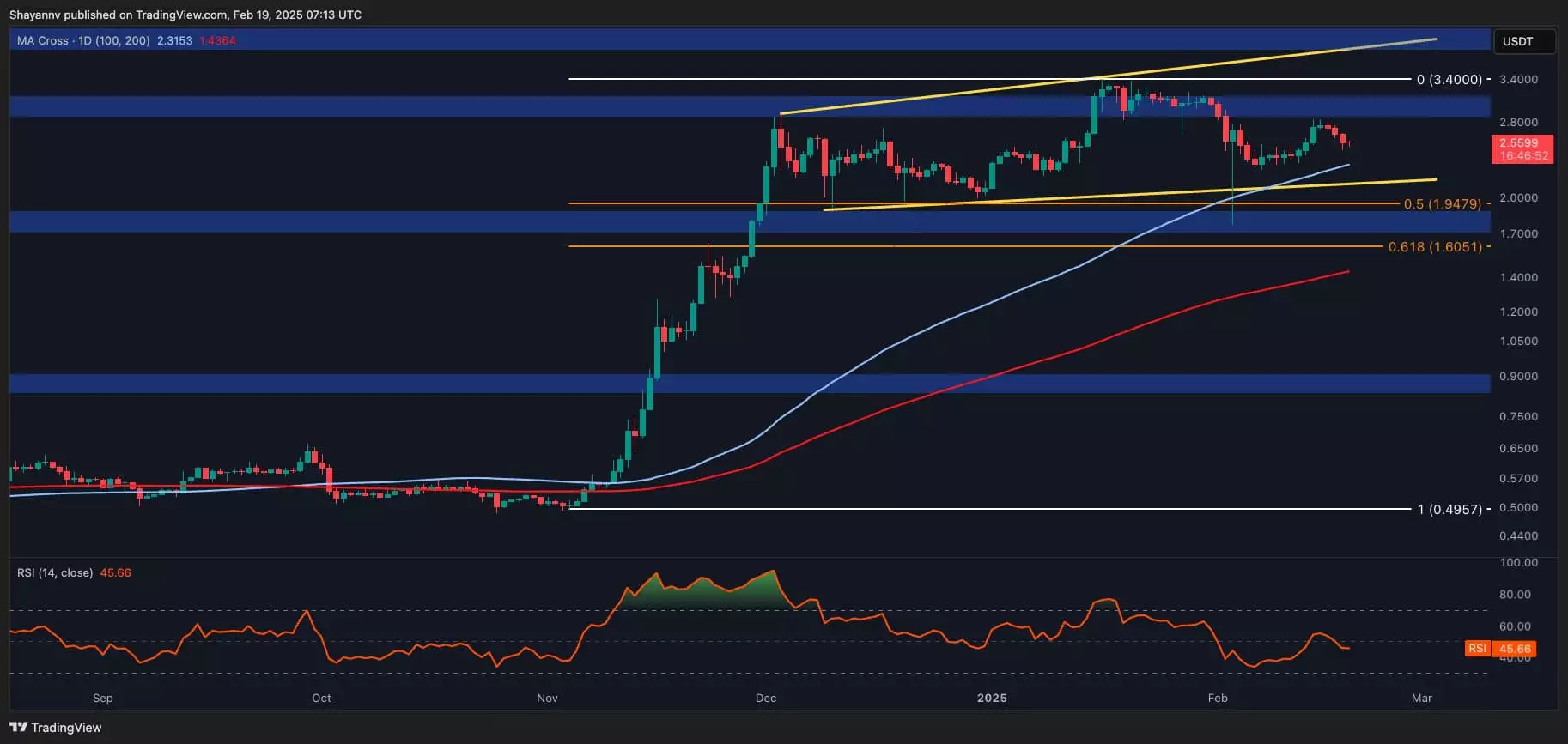Ripple (XRP) has recently experienced a subtle rejection at the $2.8 threshold, marking a pivotal moment in its price action. Following this encounter, a slight downturn has been observed, prompting analysts and traders alike to ponder the implications of this resistance level. The current situation showcases Ripple’s ongoing battle within a complex framework of market dynamics, as it approaches a vital support range that will influence its future trajectory.
Ripple’s price behavior can be encapsulated within an expanding wedge pattern, characterized by fluctuating highs and lows indicative of consolidation. This pattern suggests an overarching indecision in the market; while sellers are pressing down on prices, the asset retains the potential for recovery. Key support zones play a crucial role in framing trading strategies, as they provide possible defensive positions for buyers. The most salient of these include the 100-day moving average at $2.3, a robust support line at the $2 mark, and further up, significant confluence zones created by Fibonacci retracement levels—specifically the 0.5 level at $1.9 and the 0.618 level at $1.6.
The intersection of these multiple support levels raises the likelihood of a forthcoming bullish rebound, particularly if the price stabilizes within this range. In light of the long-term outlook, traders may find themselves strategizing for potential gains, especially as consolidation appears the most feasible short-term scenario. The presence of established support points fosters a sense of confidence among investors, suggesting that the likelihood of a rebound remains strong—provided that prices do not breach critical thresholds that would signal bearish territory.
On the 4-hour chart, the significance of the $2.8 resistance becomes glaringly apparent. The recent price rejection at this level has brought to light the precarious nature of Ripple’s short-term price action. While there remains a dynamic support range that could halt further declines, particularly the $2.3 threshold emerging from the wedge’s lower boundary, any decisive move below this level may precipitate a wave of selling pressure. A breach of this pivotal support could invite substantial liquidations, pushing prices towards the next major support of $2.
The interplay of resistance and support levels paints a compelling picture for Ripple. As the asset treads a fine line between potential recovery and further declines, the periods of consolidation may well set the stage for significant price developments. Traders must stay vigilant, closely monitoring price fluctuations and market conditions, as these will dictate the asset’s immediate future. Given the ongoing market indecision, patience and strategic planning will be crucial for those looking to navigate the complexities surrounding Ripple in the coming days.

